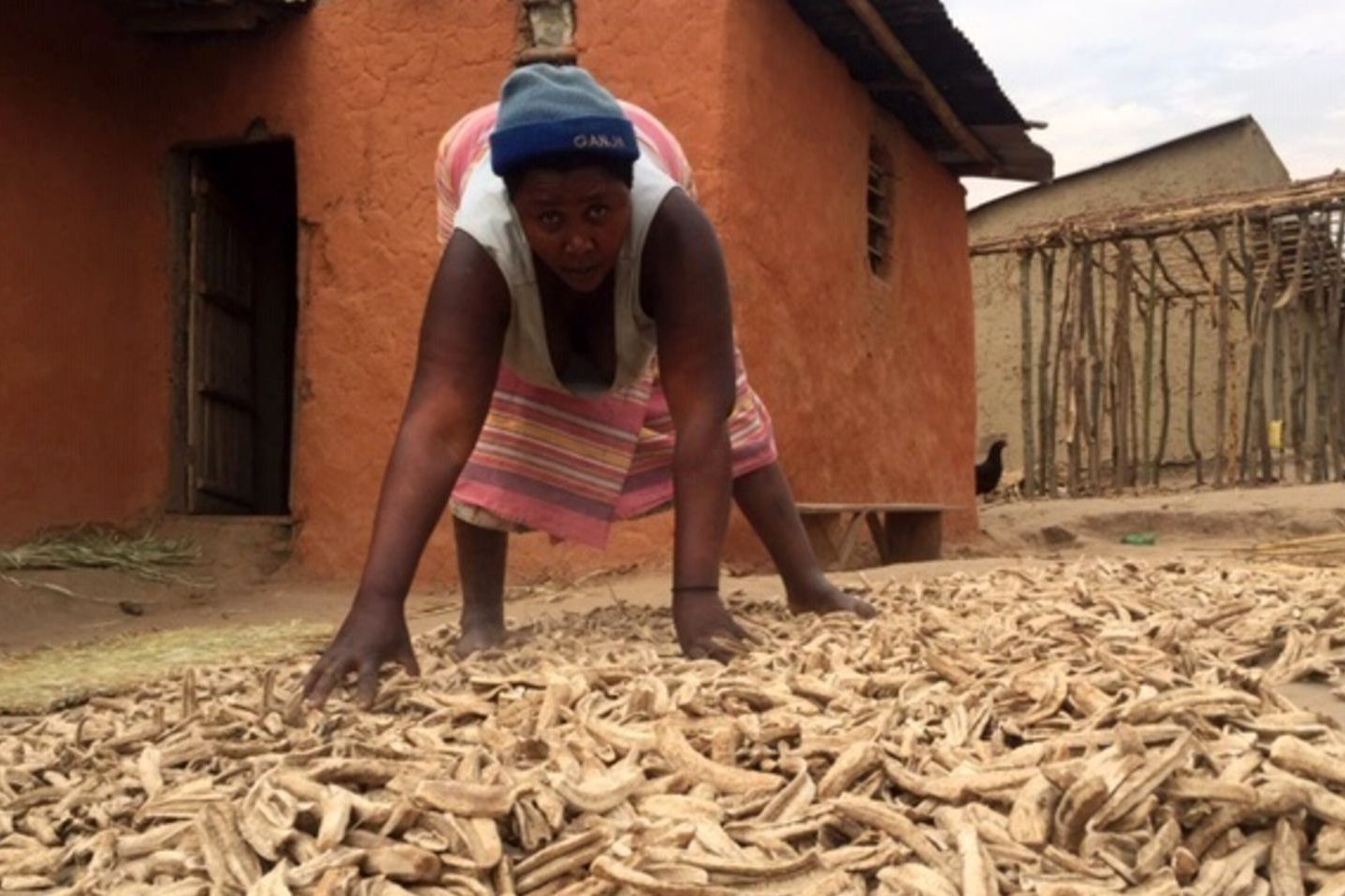Prime
Adding value to banana for higher earnings

A farmer spreads sliced banana on a tarpaulin for drying before grinding it into flour. Photo/File
What you need to know:
- Kagwa’s fortune changed when he attended a farmers’ empowerment workshop organised by the National Agricultural Advisory Services (Naads). Inspired by success stories and learning from fellow farmers engaged in value addition, Kagwa decided to pursue his dream.
In western Uganda, a determined farmer has found a solution to the meagre earnings from selling bananas by venturing into value addition.
By transforming bananas into flour, Winfred Kagwa has not only tripled his earnings but also protected himself from market gluts that commonly affect banana farmers in Uganda.
His success story serves as an inspiration to other farmers in the region, offering a way to increase profitability and address low market prices.
Addressing market challenges
Middlemen exploitation and market challenges have plagued banana farmers in the Mbarara area, a leading matooke-producing region in Uganda.
Winfred Kagwa, a matooke farmer, witnessed the struggles of fellow farmers and the dilemma of selling their bananas at low prices or leaving them to waste on the farms.
Kagwa explains, “As a matooke farmer, I have witnessed the sufferings of the farmers from the hands of middlemen. We are torn between selling the bananas to traders at a throwaway price or letting them waste on the farms.”
A journey towards value addition
Kagwa’s fortune changed when he attended a farmers’ empowerment workshop organised by the National Agricultural Advisory Services (NAADS).
Inspired by success stories and learning from fellow farmers engaged in value addition, Kagwa decided to pursue his dream.
Reflecting on his journey, Kagwa said, “I got in touch with other successful model farmers in Bushenyi who had adopted value addition in order to learn more and get tips for starting off.”
Overcoming market challenges
Kagwa initially struggled with marketing his banana flour. Priced higher than conventional maize and millet flour, it was not easily affordable for the majority of Ugandans.
However, he discovered a potential market segment and secured contracts with high-end food chain stores in Kampala.
Kagwa highlights his success, stating, “The market challenge is now fully covered, and currently, we are working on expanding our machinery to increase output.”
Spreading success
Kagwa’s success story offers hope to other banana farmers in the region, as he aims to tap into their produce at better prices. By offering competitive prices for their efforts, Kagwa hopes to empower farmers and improve their livelihoods.
He emphasises the importance of boosting productivity, stating, “At first, it was a big hustle, but after realising that the market for my high-value products was the rising middle class, I secured contracts with food chain stores in Kampala.”
Products from flour
The flour has numerous uses such as making porridge when mixed or pure to make chapatis, bread, biscuits, mandazi or bake cakes and health benefits. How is the flour processed?
The bananas are sliced into small pieces with the peelings to maintain the nutrients in the peels, sun-dried until below 10 percent moisture content is achieved, milled and sifted then packaged and stored in a closed, dry place. The flour can be stored for a year.
Banana jam
A farmer can turn overripe bananas to a sweet and enjoyable jam.
The bananas are mashed, put in a heavy saucepan with lemon juice, and honey, heated until the mixture simmers for 20 minutes while stirring over medium heat then let to cool to room temperature. It thickens and can now be refrigerated for a week.
Juice
Ripe bananas are blended and milk, orange juice, honey added then stirred.
The juice is now ready to be enjoyed as a tasty, refreshing and healthy drink.
The juice can be pasteurised and packed or used in the preparation of carbonated beverages.
Products
Through banana value addition, farmers can maximise their profits and minimise post-harvest losses. This process involves various techniques such as drying, milling, roasting, and fermenting bananas to create different products like banana crisps, flour, bread, cakes, and wine, among others.




